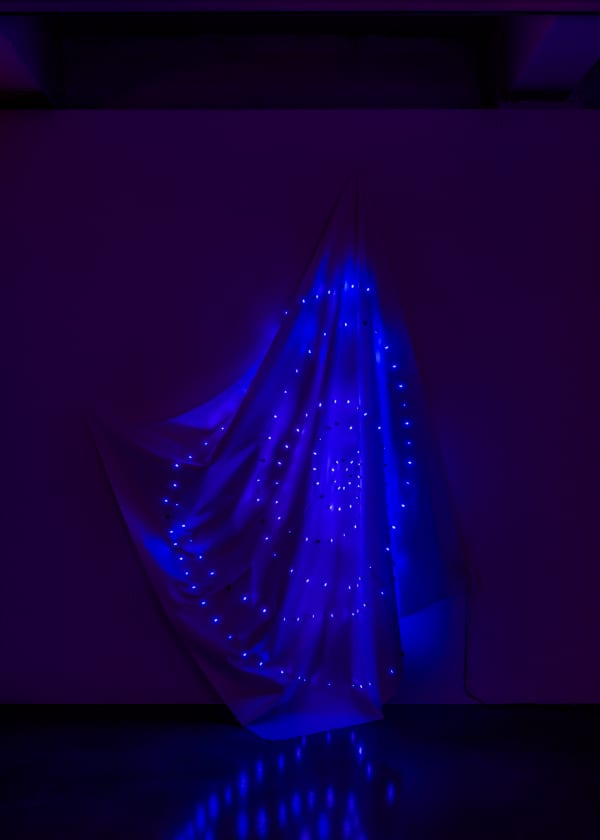Tatsuo Miyajima: Connect with Everything
Gallery Baton is pleased to announce Connect with Everything, a solo exhibition by Tatsuo Miyajima (b. 1957) who is one of the international figures of contemporary art, from 26th November 2020 to 8th January 2021. This exhibition will provide a great opportunity to experience the wide spectrum of his overall artistic career including not only his representative LED (Light Emitting Diodes) work series but his recent paintings. Miyajima’s media practice transcends visual functionality of electronic materials including LED and IC and converts them into his authentic formative language. Especially, after his solo exhibition at Santa Barbara Museum of Art in 2019, the first major museum presentation in the US, he currently participates in STARS, a group exhibition of six most prominent Japanese contemporary artists at Mori Art Museum and Chronicle 1995–2020, a solo exhibition at Chiba City Museum of Art. In this situation in which the global art world pays considerable attention to his activities, it is meaningful to have his solo exhibition in Seoul at Gallery Baton.
Flickering LED numbers, which is immediately reminiscent of Tatsuo Miyajima, was begun to be used in his work Sea of Time (1988) when he presented the work at the Aperto '88 section at The 43rd Venice Biennale after the graduation from Tokyo University of the Arts in 1986. The gleam of 300 LEDs repeats the numbers from 1 to 9 except from 0 at different speeds in sequence. On the assumption that ‘time’, the abstract and non-substantial notion, is connected to a single existence, the different countdown speed of each LED unit implies individuality of every existence in the group. In the case of Sea of Time '98 (1998) permanently installed in Kadoya House on Naoshima Island in Japan, its speed of each LED counter was decided by 128 residents of the Island through individual time-setting.
In terms of media, LED is an appropriate device to efficiently deliver Miyajima’s key philosophy, "Keep changing, it connects with everything, it continues forever." Selecting the particular material which we easily come across in an ordinary environment and keeping it as the main part of his works indicate his exceptional sensitivity as an artist.
By taking advantage of the trans-generational universality of the LED’s simple mechanism, he deals with metadiscourses about visualizing interpretations of time and the concept itself. As the identical sized LED counters which establish a certain colony can be semantically read as a metaphor signifying a fundamental unit of every object, society, generation and nation, his series supports and extends the artist’s freedom of expression about historical facts and social phenomena as a subject matter. For instance, Mega Death (1999) displayed in Japanese Pavilion at The 48th Venice Biennale, was a large-scale installation whose 2,400 blue LEDs counter symbolized numerous casualties of wars and disasters that occurred in the 20th Century.
In this exhibition, Miyajima introduces his new works, Unstable Time and Hiten series which are the outcomes of his long-time preparation and investigation. His prior works were often fixed to metal structures and walls or solid floors, whereas each element of the new series is separately situated on arbitrarily arranged wooden panels or stitched on symmetrical patterned fabric sheets. Therefore, the new works show more irregular yet fluid shapes and structures achieved by figurative autonomy of the small panels and fabrics instead of maintaining his previous works’ appearance which underlined forms of numbers, a rigid and tense impression of ‘mechanical temporality’ and a cold sense of the industrial LED’s materiality. The works can be seen as an artistic manifestation of three conditions (survival in uncertainty, being under constant threats and necessity for bold actions) mentioned in Liquid Modernity (2000), one of the masterpieces by Zygmunt Bauman (1925-2017). In this context, the works can be a message sent by Miyajima who has remained critical while witnessing rational changes in a circumstance of life due to pandemics and natural catastrophes including global warming caused by the human race.
Tatsuo Miyajima has held solo exhibitions at numerous prestigious museums including Santa Barbara Museum of Art, Santa Barbara (2019); Shanghai Minsheng Art Museum, Shanghai (2019); Museum of Contemporary Art Australia, Sydney (2016); The MET Breuer, New York (2016); UCCA Center of Contemporary Art, Beijing (2011); Art Sonje Center (2002); San Fransisco Museum of Modern Art, San Francisco (1997), Kunsthalle Zürich, Zürich (1993), Hiroshima City Museum of Contemporary Art, Hiroshima (1990) and etc. His work is included in the collections of British Museum, UK; Tate Collection, UK, Fondation Cartier, France; SFMOMA, USA; Museum of Contemporary of Art Chicago, USA; Dallas Museum of Art, USA; Denver Ar Museum, USA; Modern Art Museum of Fort Worth; and Leeum, Samsung Museum of Art, Korea.







